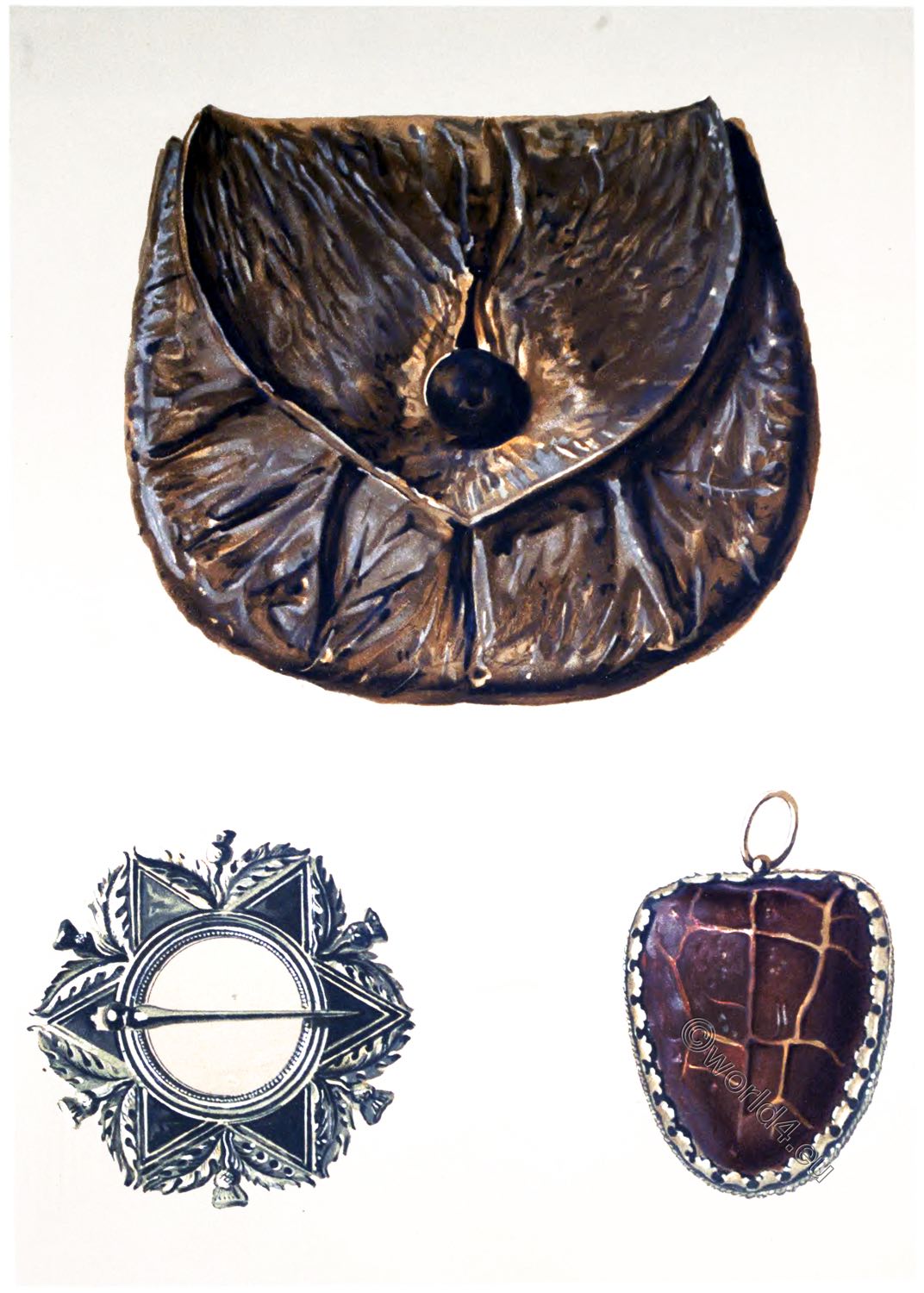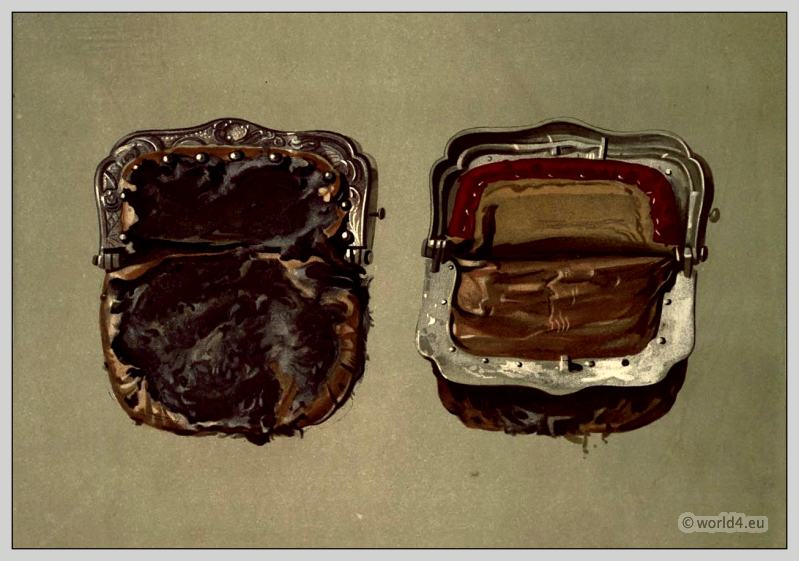
The Purse of Rob Roy. Helen Macgregor`s brooch. Toadstone Amulet.
(Rob Roy, alternately Red MacGregor. Scottish Gaelic: Raibeart Ruadh MacGriogai 1671-1734)
The Purse of Rob Roy.
THE purse is 4 inches broad by 4 1/2 inches deep, and is made of brown leather, much worn. It has two divisions, and has evidently been sewn to a belt, the holes of the stitches being visible in four places at the back.
The front of the purse is gathered together in two folds by a leather thong, and the flap is fastened with a button. It contains a card with the following lines: “This purse, with a dirk now (1818) in the possession of Mr. Young, Castle Douglas, was given by Rob Roy to Maxwell, Esq., of Straquhan in the parish of Dunscore. After this gentleman was drowned in the River Fleet, the purse and dirk became the property of Thos. Walker, an old servant, whose son, through the intermedium of a friend, gave this purse to Joseph Train, who takes the liberty of presenting it to Walter Scott, Esq.”
In the Abbotsford MSS. we find the following note which completes this account. “The generous supervisor, Mr. Train, visited Sir Walter in Edinburgh in May 1816, a few days after the publication of the Antiquary, carrying with him several relics which he wished to present to his collection, among others a Purse that had belonged to Rob Roy.”
Helen Macgregor`s brooch.
(Mary Helen MacGregor of Comar 1671-1745. Married with Rob Roy in January 1693)
The brooch is of silver, circular in form, and of the style generally termed Celtic. It is a six-pointed star with a thistle and two leaves between, and alternating with each point. The drawing is full size. The brooch appears to have been the chief ornament in the dress of the Gael, both in Ireland and Scotland, and was used by the women to fasten the plaid and other portions of their attire, from which Pinkerton thinks may be derived the usual perquisite of women, pin-money. Although a woman of “fierce and haughty temper,” this high-spirited chieftainess must have possessed warm feelings and no mean taste for music, as evinced by Rob Roys Lament, a fine piece of pipe music composed by her to express her grief when she and her husband were forced to leave the banks of Loch Lomond, about the year 1712.
To compensate for our meagre knowledge of Helen we venture to quote Francis Osbaldistone’s description of her in the novel of Rob Roy, not omitting the worthy Bailie’s comment on her appearance.
“I have seldom seen a finer or more commanding form than this woman. She might be between the term of forty and fifty years, and had a countenance which must once have been of a masculine cast of beauty, though now imprinted with deep lines by exposure to rough weather, and perhaps by the wasting influence of grief and passion, its features were only strong, harsh, and expressive. She wore her plaid, not drawn around her head and shoulders as is the fashion of the women in Scotland, but disposed around her body, as the Highland soldiers wear theirs. She had a man’s bonnet, with a feather in it, an unsheathed sword in her hand, and a pair of pistols at her girdle. “‘It’s Helen Campbell, Rob’s wife,’ said the Bailie, in a whisper of considerable alarm; ‘and there will be broken heads amang us or it’s lang.'”
TOADSTONE AMULET
The amulet, in length 2 inches, and in breadth 1 3/4, is a flat, heart-shaped stone of a dark reddish brown, veined with shades of lighter colour. It is surrounded by a silver mounting in the form of leaves, tied down by a double chain. An oval ring is fixed at the top, to allow of it being worn on a ribbon or chain, a use to which it seems often to have been put, as Sir Walter tells us in the following description of this gabion: “A loadstone, a celebrated amulet, which was never lent to any one unless upon a bond for a thousand marks for its being safely restored. It was sovereign for protecting new-born children and their mothers from the power of the fairies, and has been repeatedly borrowed from my mother on account of this virtue.”
Source: Abbotsford, the personal relics and antiquarian treasures of Sir Walter Scott. Illustrated by William Gibb – Maxwell-Scott, Mary Monica (Hon), 1852-1920.
Related
Discover more from World4 Costume Culture History
Subscribe to get the latest posts sent to your email.

